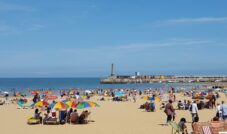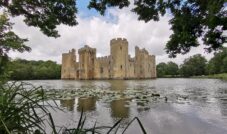Kent is full of amazing stories, from ancient Roman forts to grand castles and beautiful gardens. This guide gives a simple and welcoming look at some of the county’s most special historic places.
Whether you’re wandering through secret tunnels, climbing castle towers, or strolling peaceful paths, there’s something for everyone to discover. Each spot comes with its own tale and plenty of things to see and do.
So if you’re planning a trip or just curious about Kent’s past, this friendly overview is your starting point for exploring history in a fun and easy way.
Jump To Section
Dover Castle
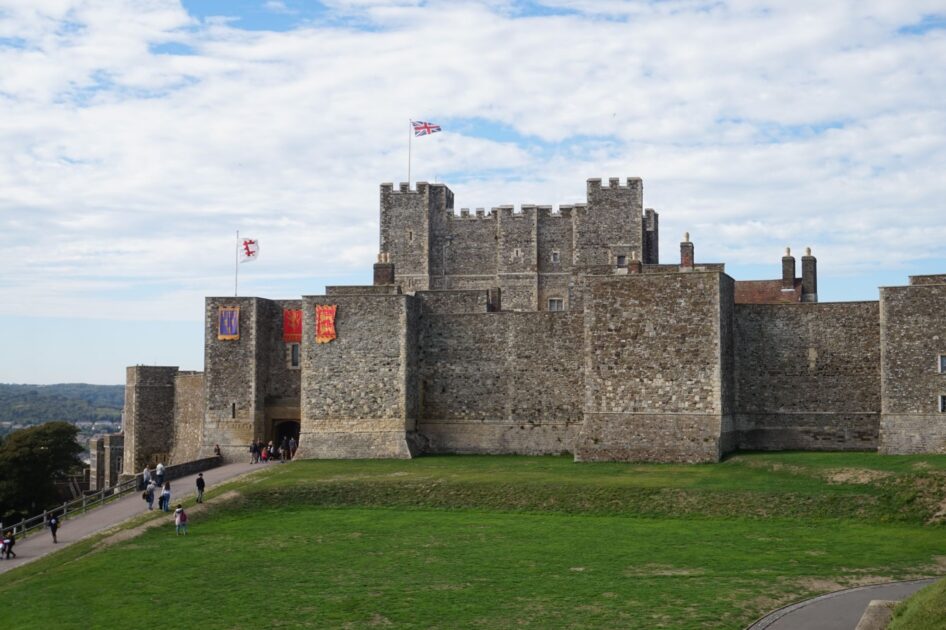
History of Dover Castle
Dover Castle has protected England for over 2,000 years. It began as an Iron Age hillfort, then became a Roman site with a lighthouse still standing today. After the Norman Conquest in 1066, William the Conqueror built early defences. In the 12th century, King Henry II created the Great Tower and strong walls. The castle survived sieges in 1216 and 1265. It was later used by kings, prisoners, and soldiers. During World War II, its tunnels became a command centre for Operation Dynamo, helping rescue troops from Dunkirk. Today, it remains one of England’s most important historical fortresses.
What to See and Do
Visitors can explore the Great Tower, filled with colourful medieval rooms and rooftop views. The Secret Wartime Tunnels offer dramatic stories from World War II, including the Underground Hospital. You can walk along the castle walls, visit the Roman lighthouse and Anglo-Saxon church, and discover the new “Under Siege” exhibition. Families enjoy the play area, escape room, and picnic spots with views of the White Cliffs. Guided tours and costumed characters bring history to life. There are also cafés and gift shops to relax and browse during your visit. Dover Castle is my favourite English Heritage site in Kent. Read my full review of Dover Castle.
Address: Castle Hill, Dover, Kent, CT16 1HU – English Heritage website
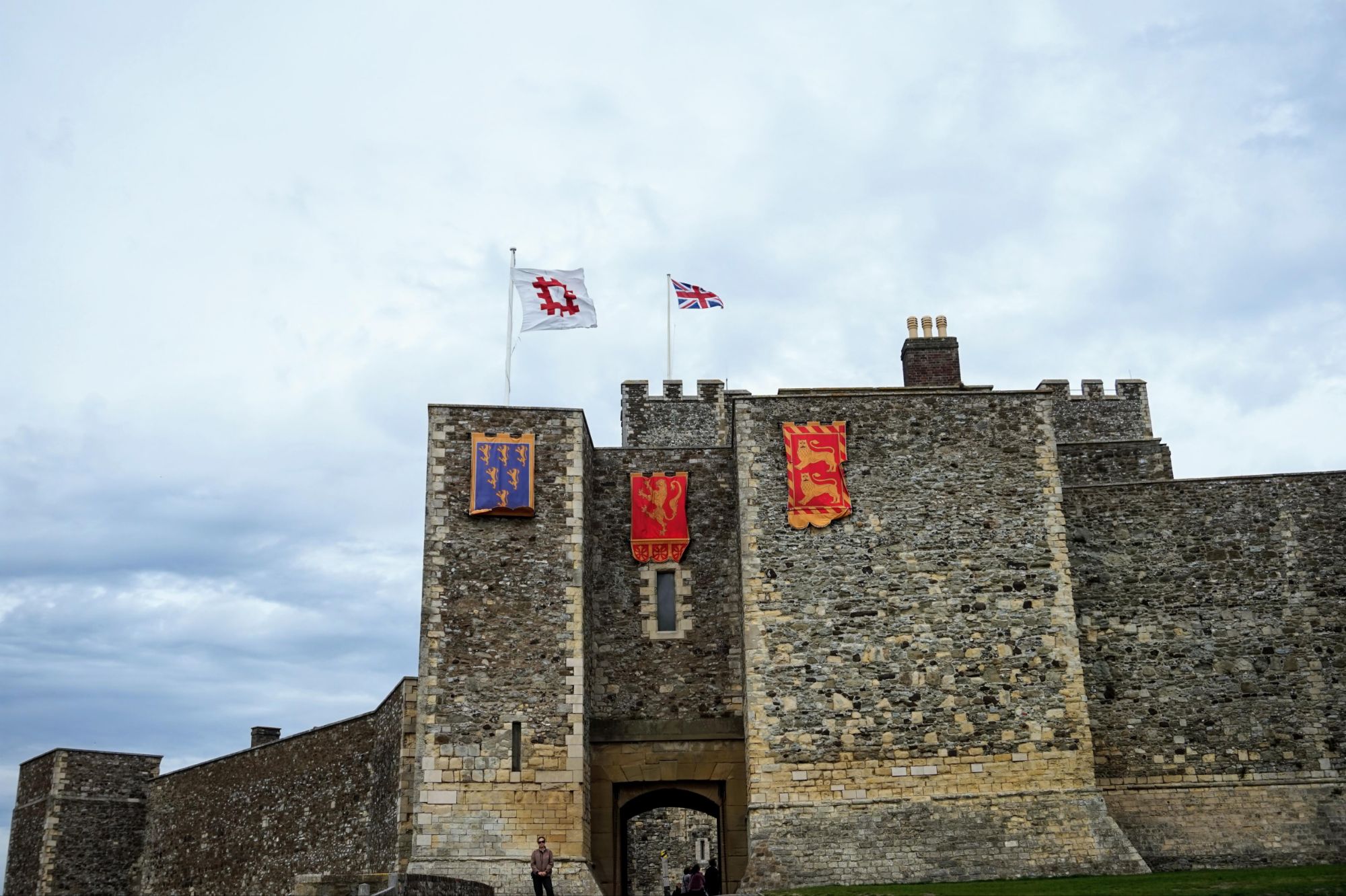
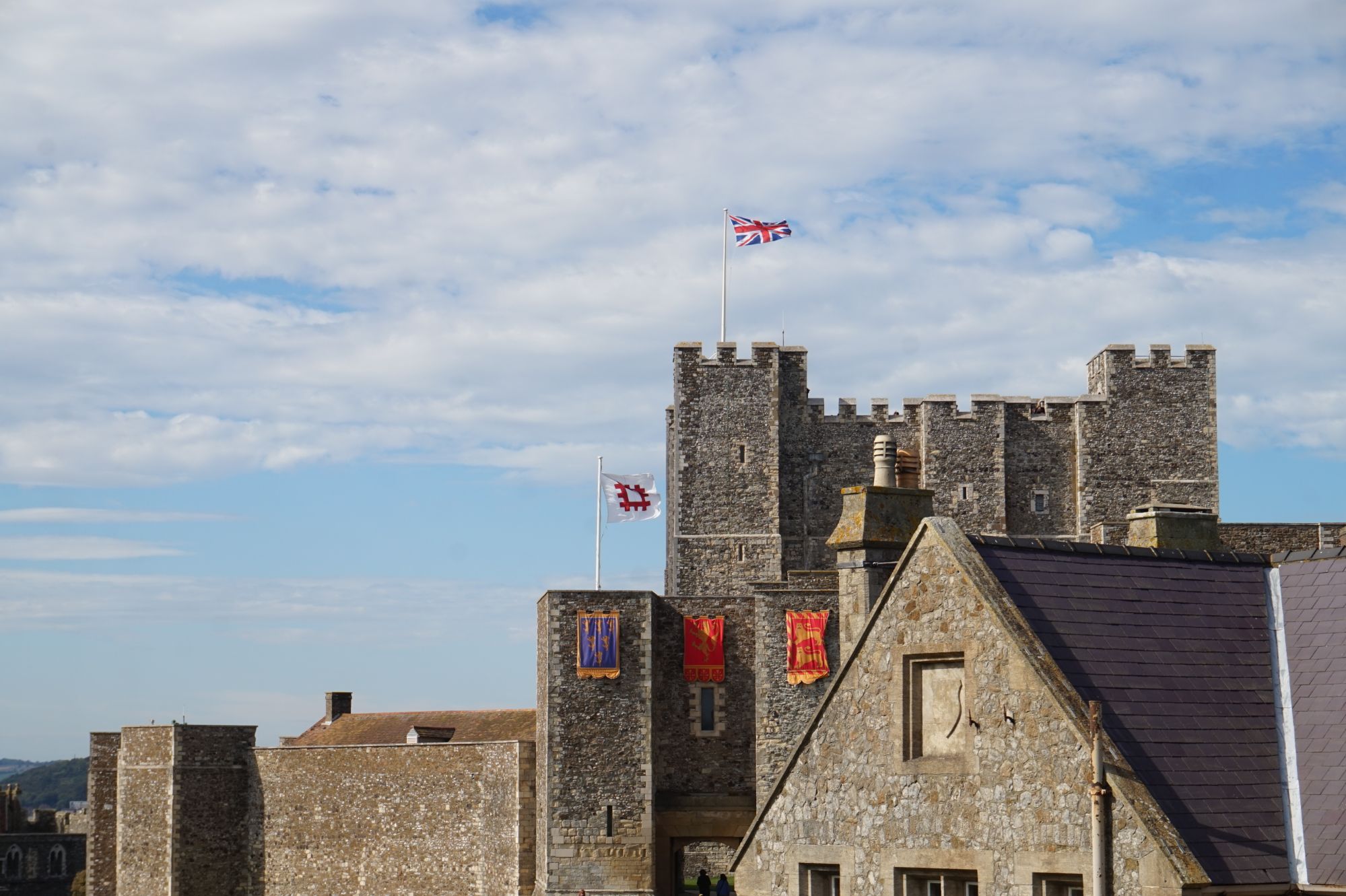
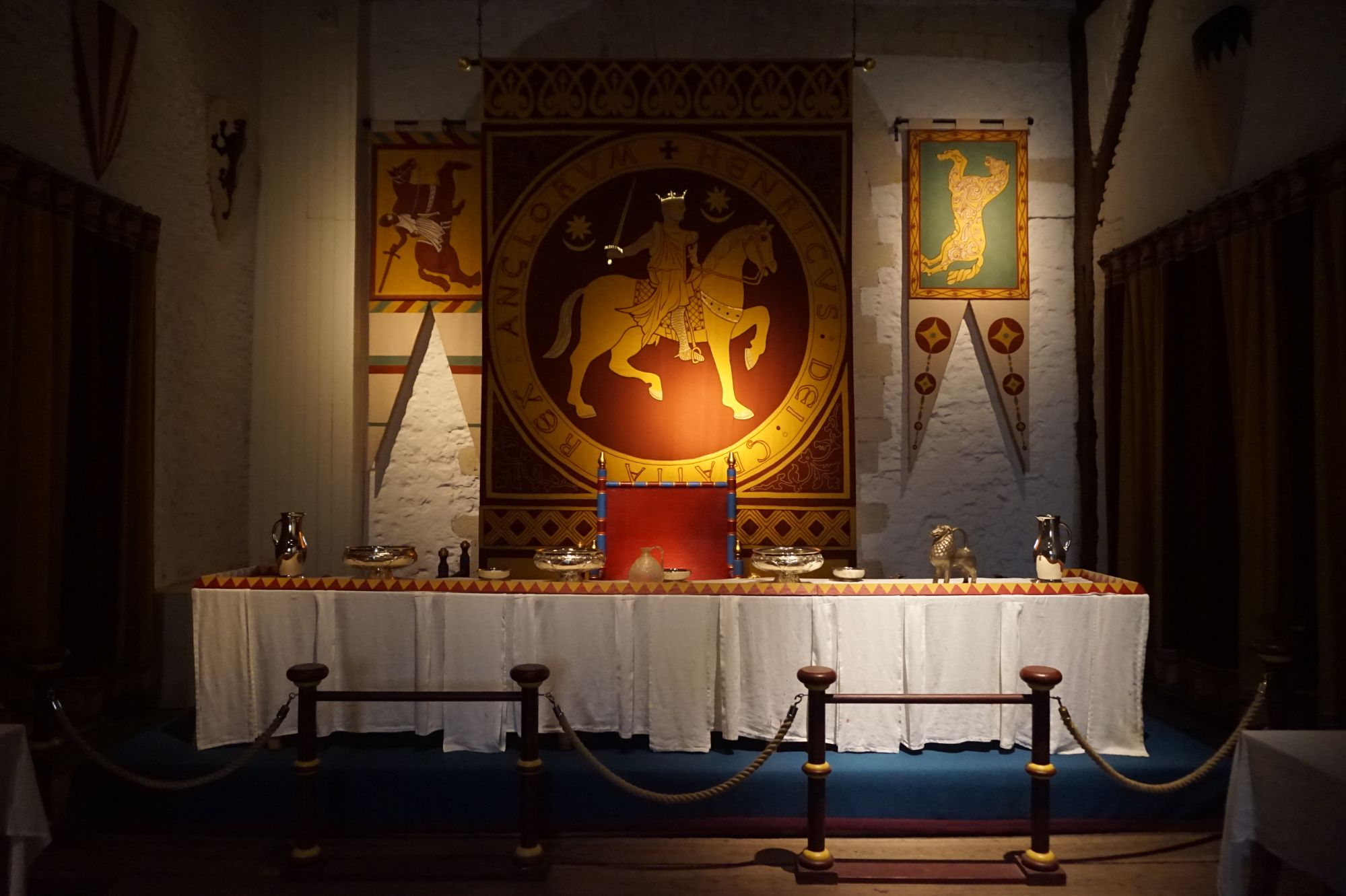
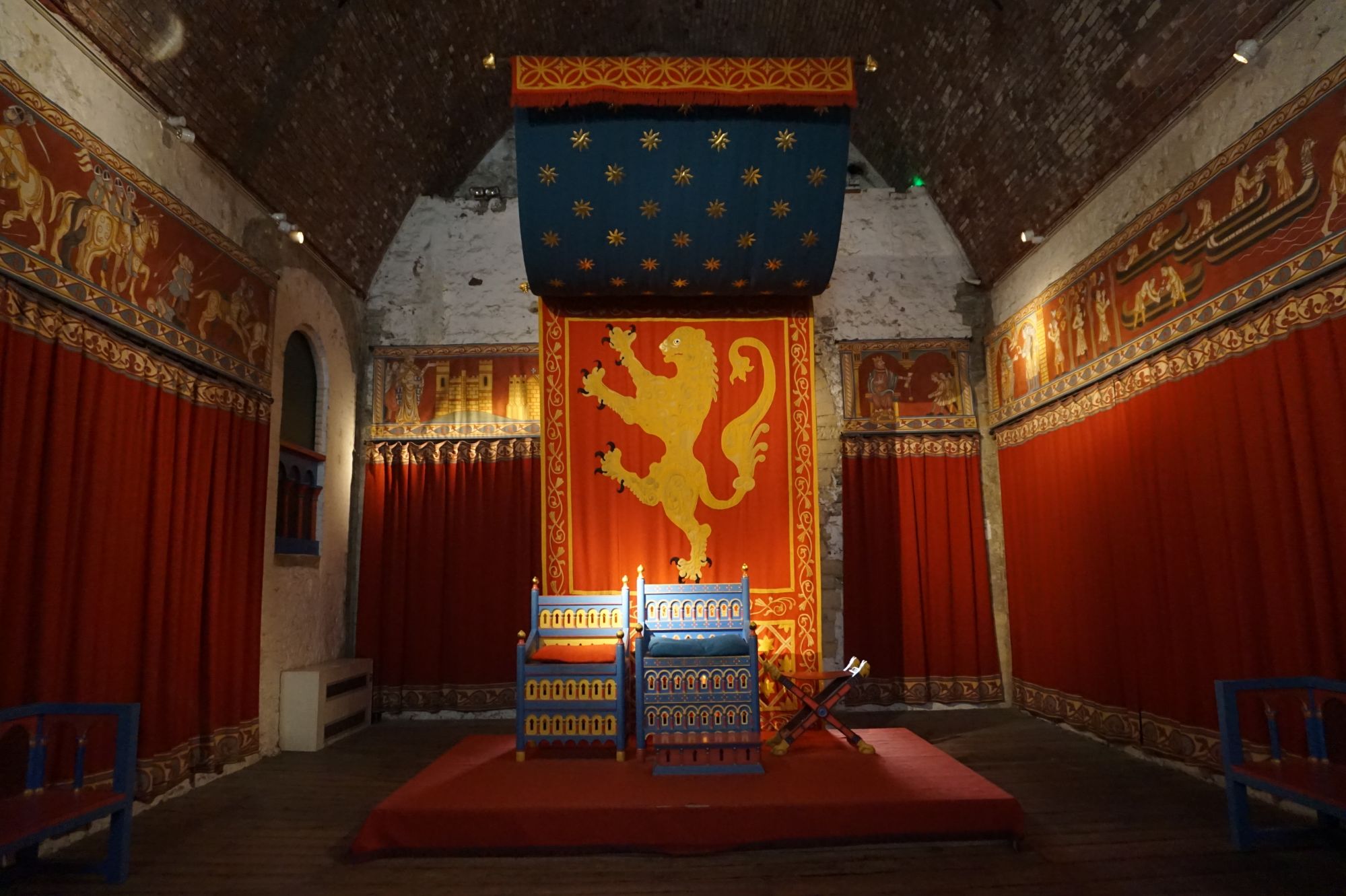
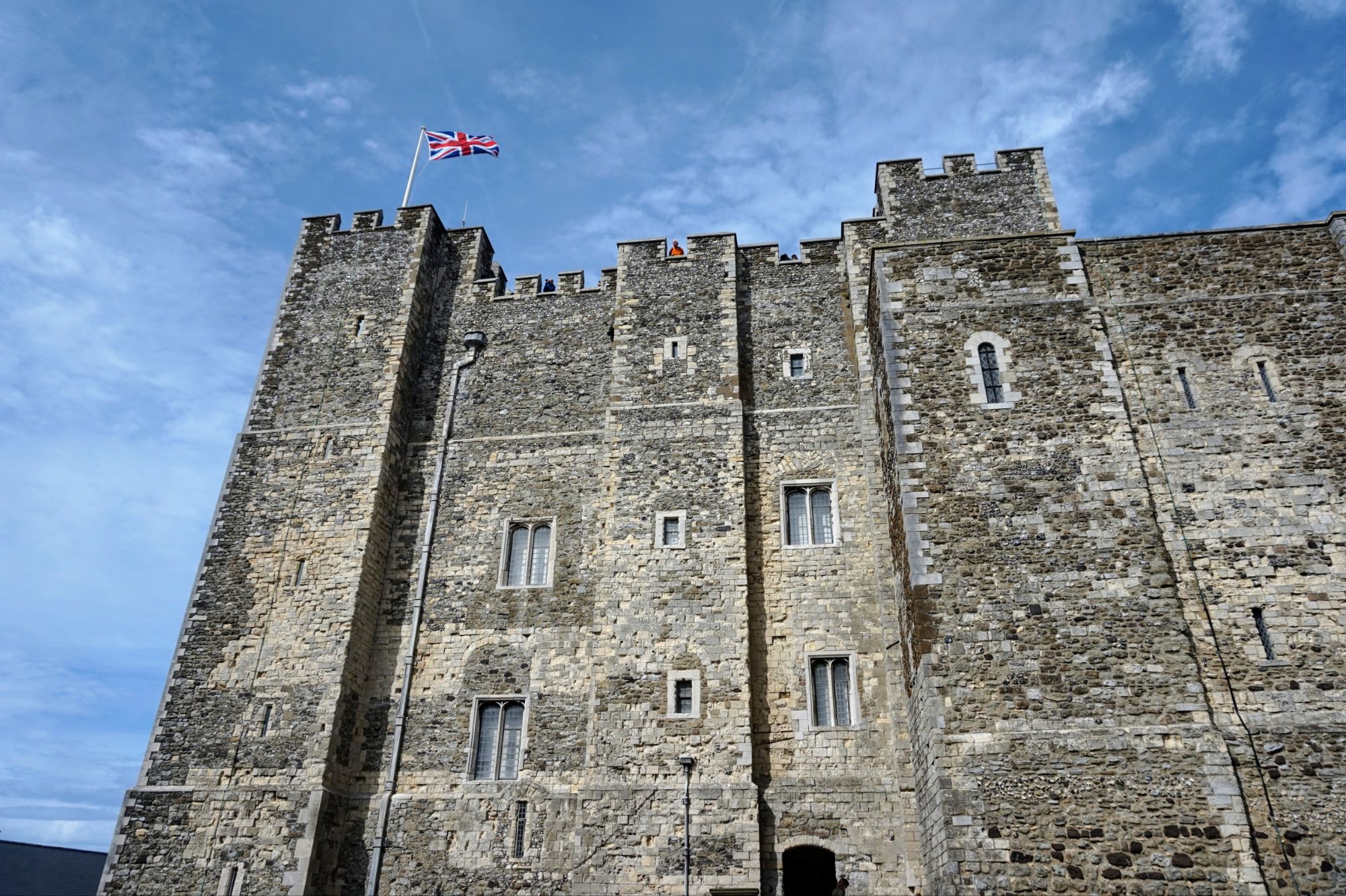
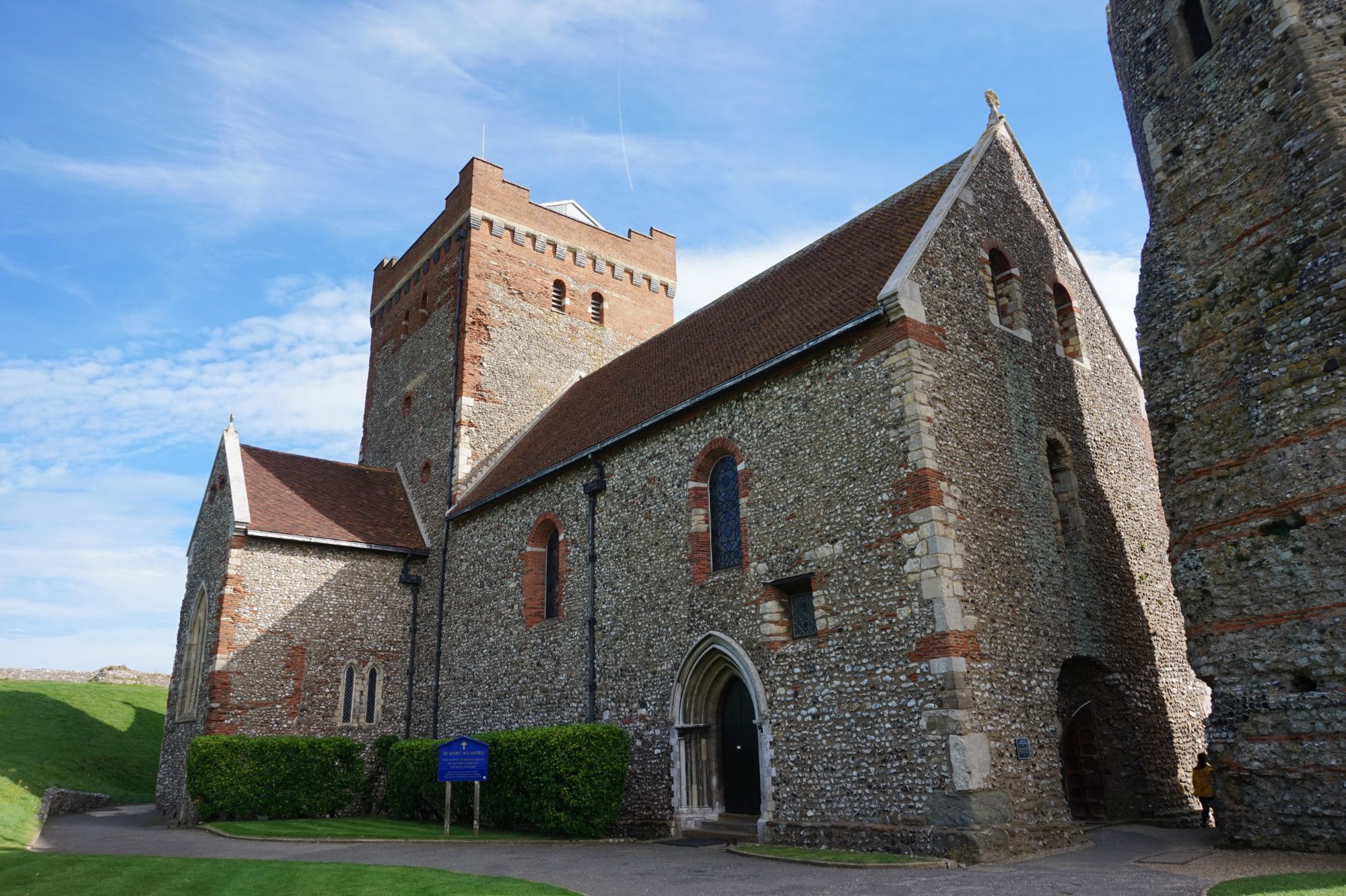
Home of Charles Darwin – Down House
History of Down House
Down House was the home of Charles Darwin for 40 years. He moved there in 1842 with his family, seeking peace and space for his scientific work. It was in this house and its gardens that Darwin developed his theory of evolution by natural selection and wrote On the Origin of Species. The property was originally built in the early 18th century and later expanded by Darwin to include a study, greenhouse, and his famous “Sandwalk” path for daily reflection. After his death in 1882, the house became a museum and is now managed by English Heritage.
What to See and Do
Visitors can step into Darwin’s study, preserved with original furniture and scientific tools. Upstairs, an exhibition explores his life, voyage on HMS Beagle, and groundbreaking discoveries. The recreated bedroom offers views of the gardens and insight into Darwin’s personal life. Outside, stroll through the gardens and greenhouse where he conducted plant experiments, and walk the Sandwalk path used for daily thinking. Families can enjoy interactive displays, dress-up activities, and a café serving treats inspired by Emma Darwin’s recipes. Seasonal events and guided tours add depth to the experience. See my full review of Down House.
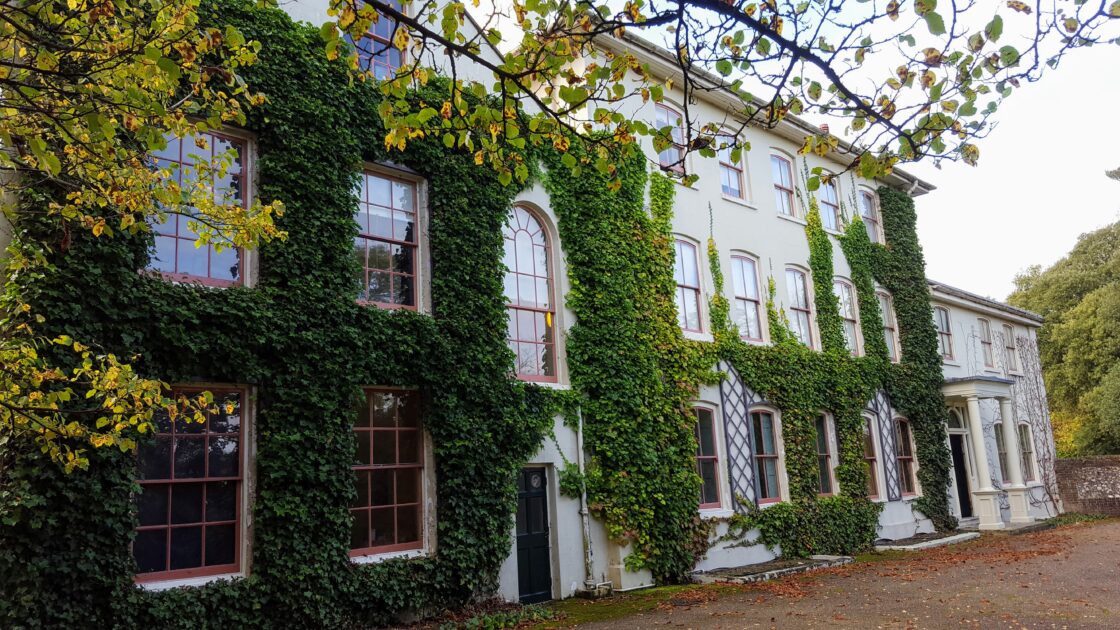
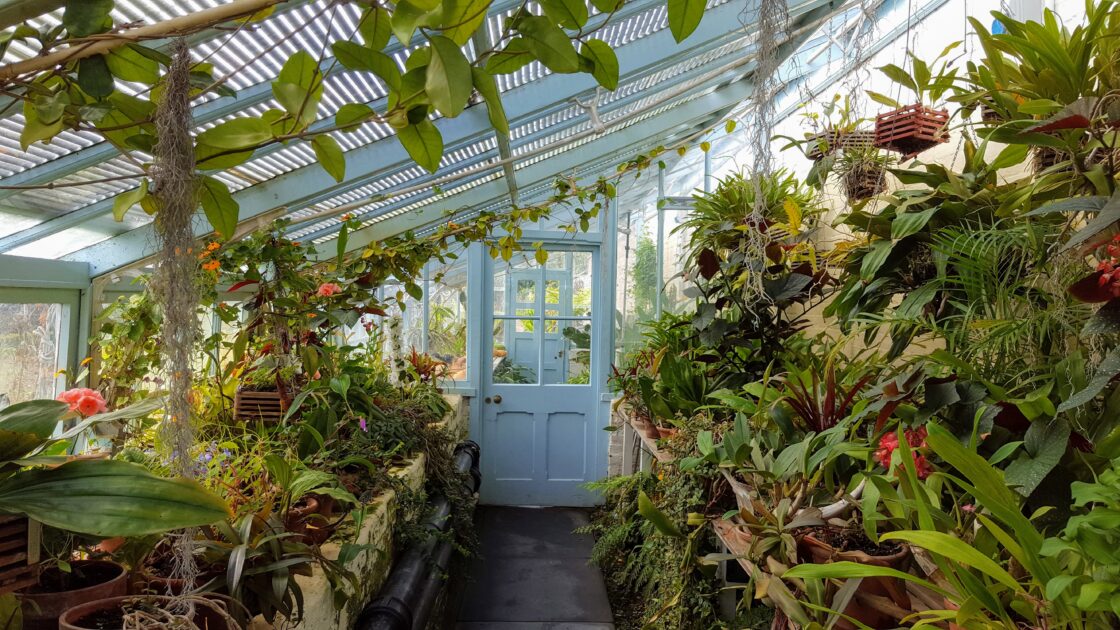

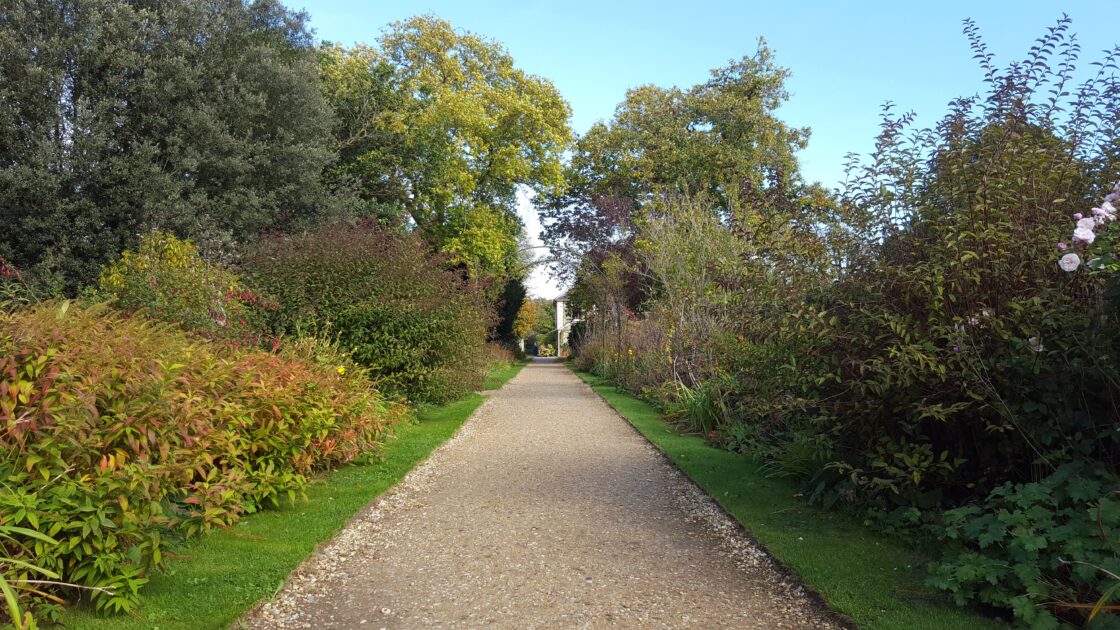
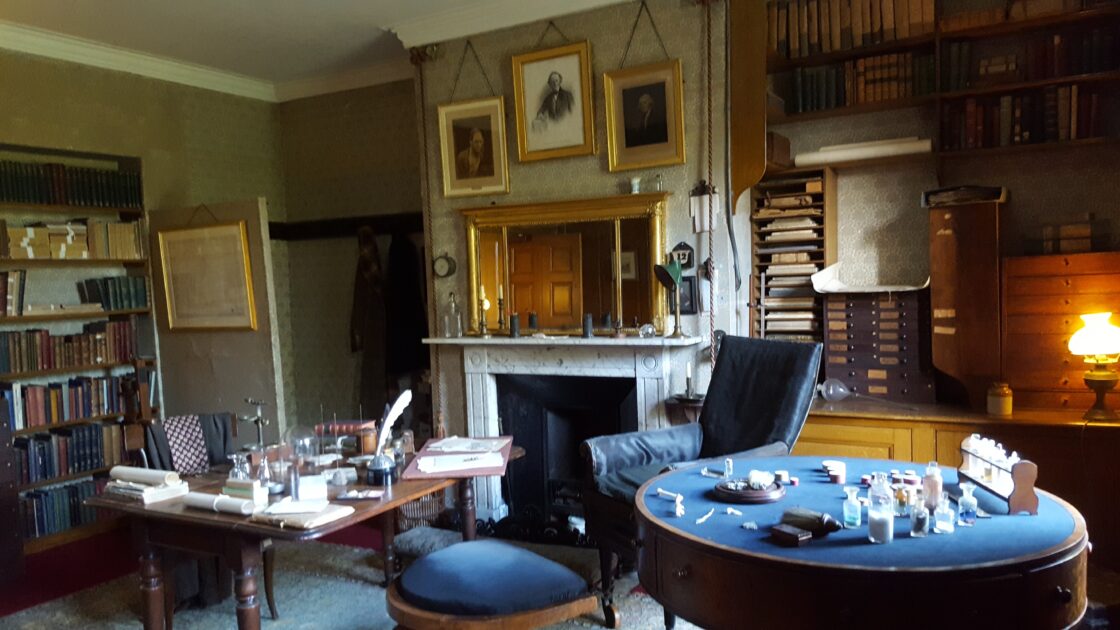
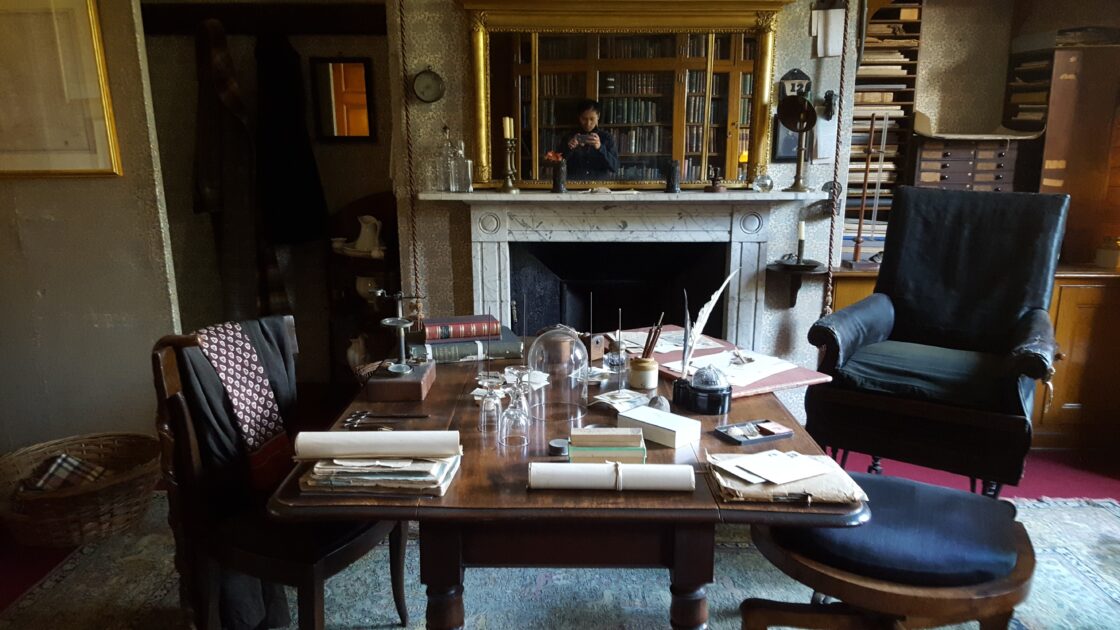
Address: Luxted Road, Downe, Kent, BR6 7JT – English Heritage website
Walmer Castle and Gardens
History of Walmer Castle and Gardens
Walmer Castle was built in 1539 by order of King Henry VIII to defend England’s coast against invasion from France and the Holy Roman Empire. It later saw action during the English Civil War and remained a military site for centuries. In the 18th century, it became the official residence of the Lord Warden of the Cinque Ports. Famous residents include Prime Minister William Pitt and the Duke of Wellington, who died here in 1852. Over time, the castle evolved into a stately home with elegant gardens, visited by Queen Elizabeth The Queen Mother and other dignitaries.
What to See and Do
Visitors can explore the Duke of Wellington’s preserved bedroom, the Lord Warden’s private apartment, and exhibitions about the castle’s history. The gardens are a major highlight—wander through the Broadwalk with its cloud-shaped hedges, the tranquil Queen Mother’s Garden, and the restored Glen Garden in a former chalk quarry. Families enjoy the natural play trail, woodland walks, and seasonal events. There are guided tours, wildlife walks, and wellbeing activities like yoga and meditation. Two cafés offer fresh food, and the shop and secondhand bookshop are perfect for souvenirs. Deal is also one of my favourite seaside towns in Kent and is worth a day trip.
Address: Kingsdown Road, Deal, Kent, CT14 7LJ – English Heritage website
Rochester Castle
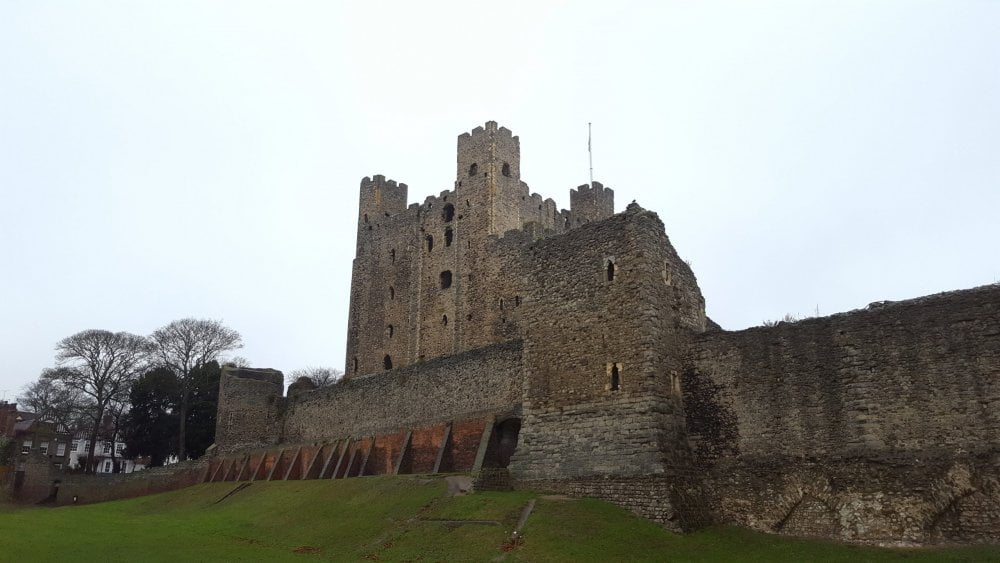
History of Rochester Castle
Rochester Castle was founded shortly after the Norman Conquest and rebuilt in stone between 1087 and 1089 by Gundulf, Bishop of Rochester. Its towering keep, added in 1127 by Archbishop William de Corbeil, is one of the tallest and best-preserved Norman keeps in England. The castle played a key role in medieval conflicts, enduring three major sieges—most famously in 1215 when King John used pig fat to collapse part of the keep. Though it fell into ruin by the 17th century, it was never demolished and remains a powerful symbol of Norman military architecture.
What to See and Do
Visitors can climb the 113-foot keep for sweeping views of the River Medway and surrounding countryside. Inside, explore the vast stone chambers and learn about the dramatic sieges through interpretation panels and models. The castle grounds are ideal for picnics and host seasonal events like open-air theatre and medieval storytelling. Nearby, Rochester Cathedral and the Guildhall Museum offer deeper insights into the city’s history. The High Street, just steps away, is lined with independent shops, cafés, and historic buildings featured in Charles Dickens’ novels.
Address: Castle Hill, Rochester, Kent, ME1 1SW – English Heritage website
Richborough Roman Fort and Amphitheatre
History of Richborough Roman Fort and Amphitheatre
Richborough was the gateway to Roman Britain. In AD 43, Emperor Claudius’s army landed here to begin the Roman conquest. The site started as a military base, then grew into a busy port town called Rutupiae. It had a triumphal arch, large warehouses, and an amphitheatre. By the late 3rd century, the town was fortified with massive stone walls as part of the Saxon Shore defences. Richborough remained active until the end of Roman rule around AD 410, making it one of the last places of Roman contact in Britain.
What to See and Do
Walk through the remains of the Saxon Shore fort and climb the reconstructed Roman gateway for views across Kent. Explore the museum with Roman artefacts, including coins, statues, and tools. Visit the earthwork remains of the amphitheatre, where gladiators once fought. Families can enjoy the Kids’ Trail and interactive games inside the museum. Audio guides and interpretation boards help bring the site’s history to life. On clear days, you can see as far as Reculver, another Roman fort on the coast.
Address: Off Richborough Road, Sandwich, Kent, CT13 9JW – English Heritage website
Upnor Castle
History of Upnor Castle
Upnor Castle was built between 1559 and 1567 by order of Queen Elizabeth I to protect Royal Navy ships anchored in the River Medway. It served as an artillery fort, with a triangular gun platform facing the river. Despite its strategic role, it failed to stop the Dutch fleet during the 1667 Raid on the Medway, one of England’s worst naval defeats. After this, the castle lost its military importance and was converted into a naval ammunition depot. It remained in use until 1945 and is now preserved as a rare example of Elizabethan coastal defence.
What to See and Do
Visitors can explore the castle’s gatehouse, towers, and riverside gun platform. Inside, you’ll find displays on the castle’s military history and the dramatic Dutch Raid. The grounds offer picnic spots and views of the Medway. A multimedia guide brings the site to life with stories, quizzes, and expert narration. Seasonal events include re-enactments, outdoor theatre, and children’s trails. The nearby village of Upnor has cobbled streets and historic pubs, perfect for a relaxing afternoon. Families can enjoy dressing-up activities, cannon-firing simulations, and open-air games in the castle’s grassy areas.
Address: Upnor Road, Upper Upnor, Rochester, Kent, ME2 4XG – English Heritage website
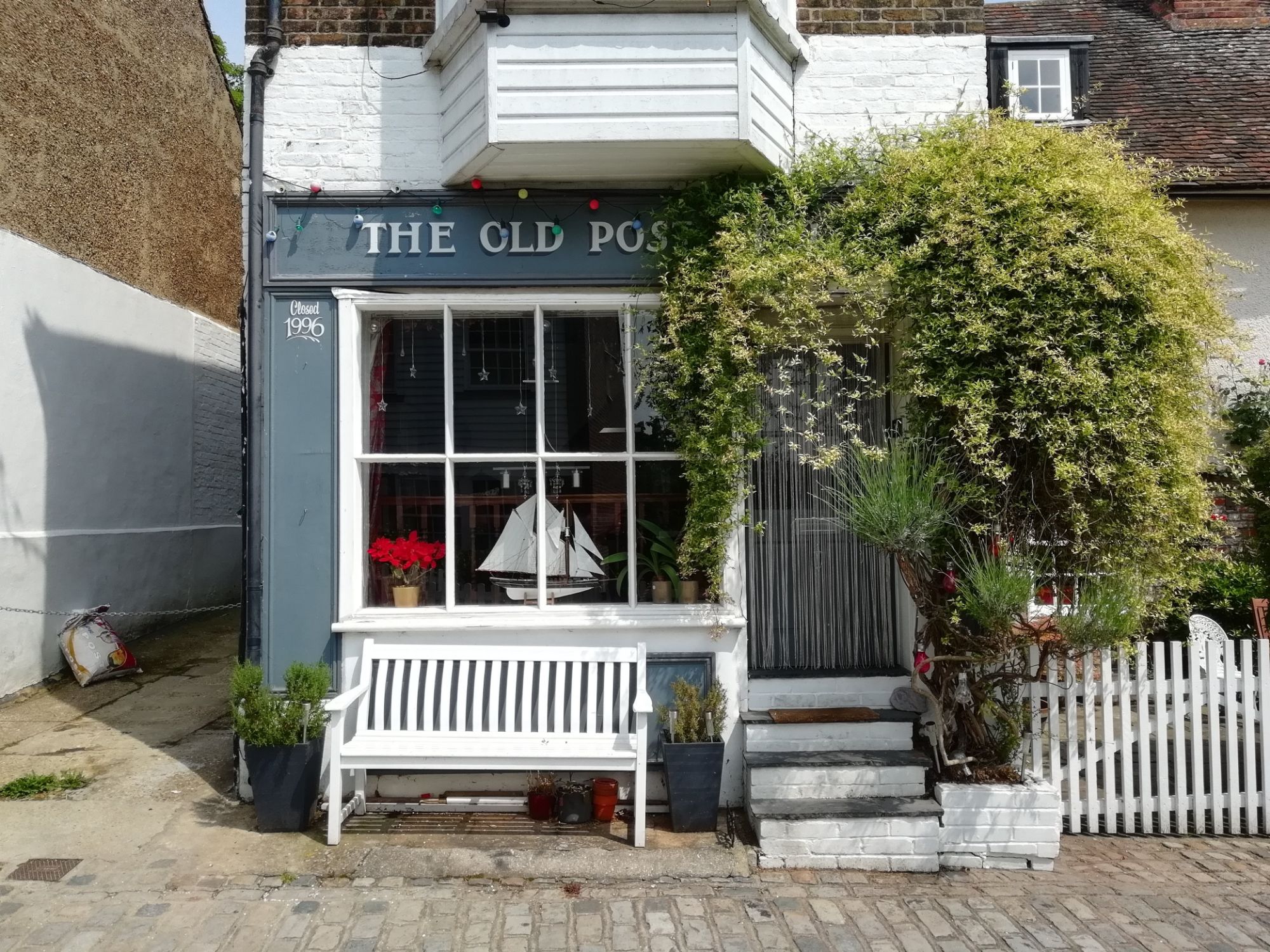
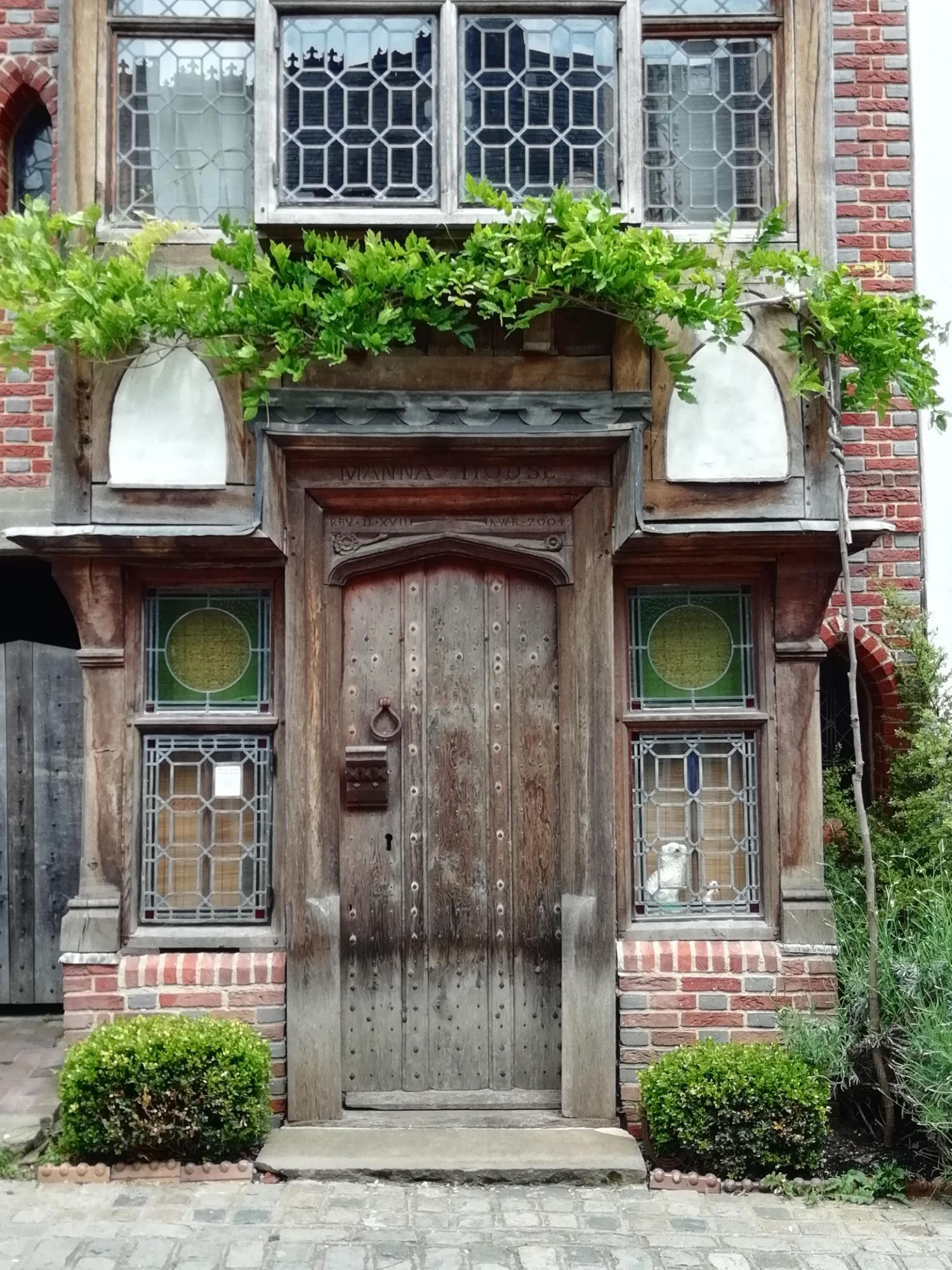
Address: Upnor Road, Upper Upnor, Rochester, Kent, ME2 4XG – English Heritage website
Deal Castle
History of Deal Castle
Deal Castle was built between 1539 and 1540 by order of King Henry VIII. It was part of a chain of coastal forts known as the “Device Forts,” designed to protect England from invasion by France and the Holy Roman Empire. Shaped like a Tudor rose, the castle featured six bastions and over 140 gun positions for all-round defence. It played a key role during the Second English Civil War in 1648, when Royalist forces seized it and held out against Parliamentarian troops. In later centuries, it became a residence for the castle’s captain and was adapted for more domestic use. During World War II, it served as an observation post and was damaged by bombing. Today, it stands as one of the best-preserved Tudor artillery forts in England.
What to See and Do
Visitors can explore the castle’s circular keep, semi-circular bastions, and the eerie underground “Rounds” passageways used for defence. Interactive exhibits reveal the castle’s military history and its role in coastal protection. Children can enjoy hands-on activities like wooden muskets and audio adventure posts. The Captain’s Apartments house a secondhand bookshop and gift shop. Outside, you can walk the moat, admire seaside views, and follow the coastal path to nearby Walmer Castle. Seasonal events, guided tours, and family-friendly activities make it a lively destination for all ages.
Address: Marine Road, Deal, Kent, CT14 7BA – English Heritage website
St. Augustine’s Abbey

History of St Augustine’s Abbey
St Augustine’s Abbey was founded in AD 598 by St Augustine of Canterbury, sent by Pope Gregory to convert the Anglo-Saxons to Christianity. King Æthelberht of Kent gave Augustine land outside Canterbury’s city walls to build a monastery. It became a major religious centre and burial place for Kentish kings and early Archbishops of Canterbury. Over centuries, the abbey expanded with grand churches and buildings. After the Norman Conquest, it was rebuilt in Romanesque style. The abbey was dissolved in 1538 during Henry VIII’s Reformation, and many buildings were destroyed. Today, its ruins are part of Canterbury’s UNESCO World Heritage Site.
What to See and Do
Visitors can walk through the abbey ruins and see the remains of medieval churches, cloisters, and burial sites. The museum displays artefacts found on site, including carvings, coins, and costumes from historical re-enactments. An audio tour explains the abbey’s history and architecture. Families can enjoy interactive games and dress-up activities in the museum. The grounds are ideal for picnics and offer views of Canterbury Cathedral. Seasonal events include outdoor theatre, guided tours, and heritage workshops. A virtual reality experience lets you explore the abbey as it looked in the 1500s, adding a modern twist to this ancient site.
Address: Longport, Canterbury, Kent, CT1 1PF – English Heritage website
Guides To More Castles, Gardens & Houses
Lullingstone Roman Villa
History of Lullingstone Roman Villa
Lullingstone Roman Villa was built around AD 100 and expanded over three centuries. It began as a luxurious country home for wealthy Romans and may have been used by the governor of Britannia. The villa featured heated baths, fine mosaics, and a pagan shrine. In the 4th century, part of the house was converted into one of Britain’s earliest Christian chapels, with wall paintings showing worshippers in prayer. The villa was destroyed by fire in the 5th century and rediscovered in the 20th century. Today, it offers rare insights into Roman life, religion, and architecture in Britain.
What to See and Do
Visitors can explore the remains of the villa under a protective roof, including stunning mosaics like the Rape of Europa and Bellerophon slaying the Chimera. The museum displays Roman artefacts, wall paintings, and busts possibly linked to Emperor Pertinax. A short film and light show bring the villa’s history to life. Families can enjoy Roman board games, dress-up activities, and interactive exhibits. The site also includes a reconstructed Christian chapel and a pagan cult room. Nearby, you’ll find walking trails, picnic spots, and connections to Lullingstone Castle and the Darent Valley.
Address: Lullingstone Lane, Eynsford, Kent, DA4 0JA – English Heritage website
Reculver Towers and Roman Fort
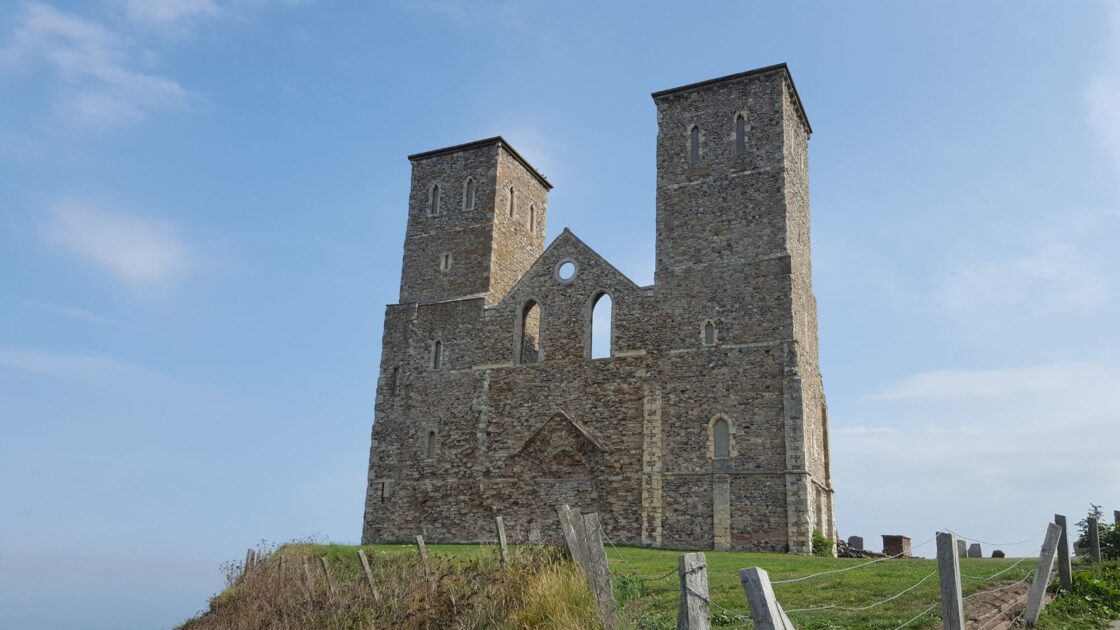
History of Reculver Towers and Roman Fort
Reculver began as a Roman fort called Regulbium, built in the late 2nd century to guard the Wantsum Channel and defend against Saxon raids. It was one of the earliest Saxon Shore forts. In AD 669, an Anglo-Saxon monastery was founded on the site, later becoming the parish church of Reculver. The twin towers were added in the 12th century and became a landmark for ships at sea. Coastal erosion has claimed much of the original site, but the towers and parts of the Roman walls still stand. Today, it’s a symbol of Kent’s layered history.
What to See and Do
Visitors can explore the remains of the Roman fort and the medieval church ruins, including the iconic twin towers. Information boards explain the site’s history, and on select days, you can access the interior of the north tower. Reculver Country Park offers walking and cycling trails with sea views, wildflower meadows, and birdwatching spots. Families enjoy the play area, picnic benches, and nearby cafés. The Saxon Shore Trail and Oyster Bay Trail connect Reculver to other coastal destinations, making it ideal for a scenic day out.
Address: Reculver Lane, Reculver, Kent, CT6 6SS – English Heritage website

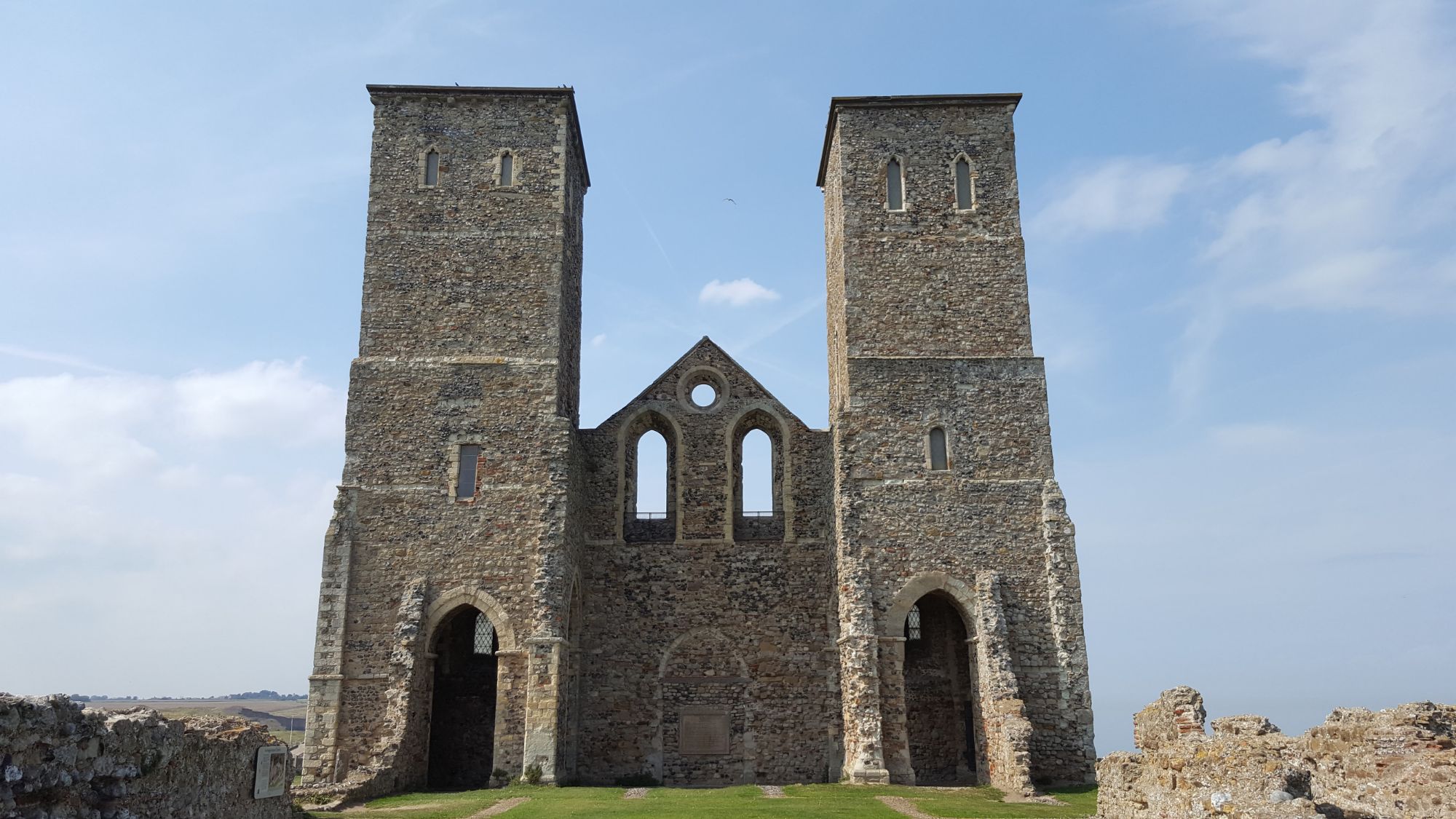
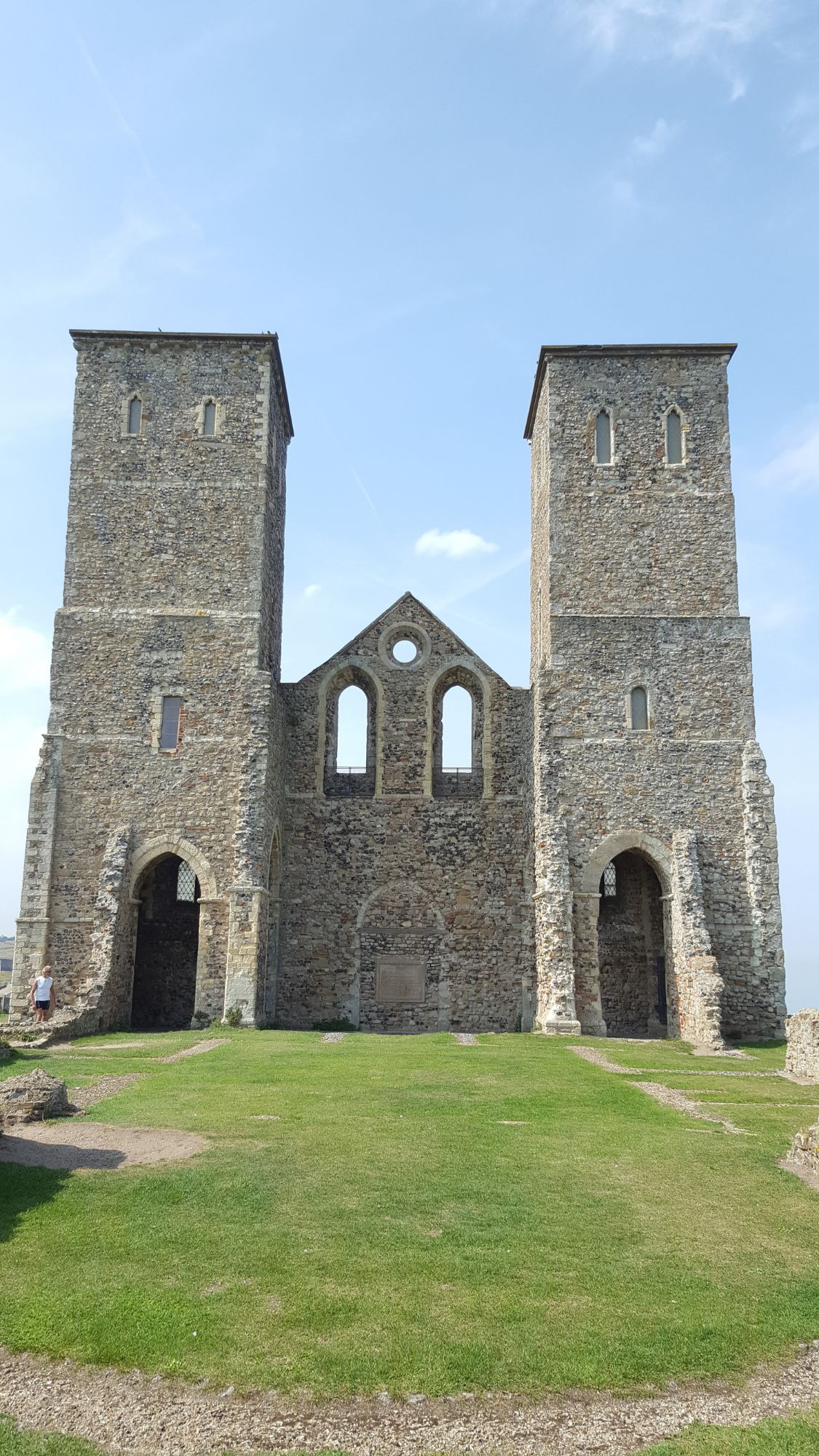
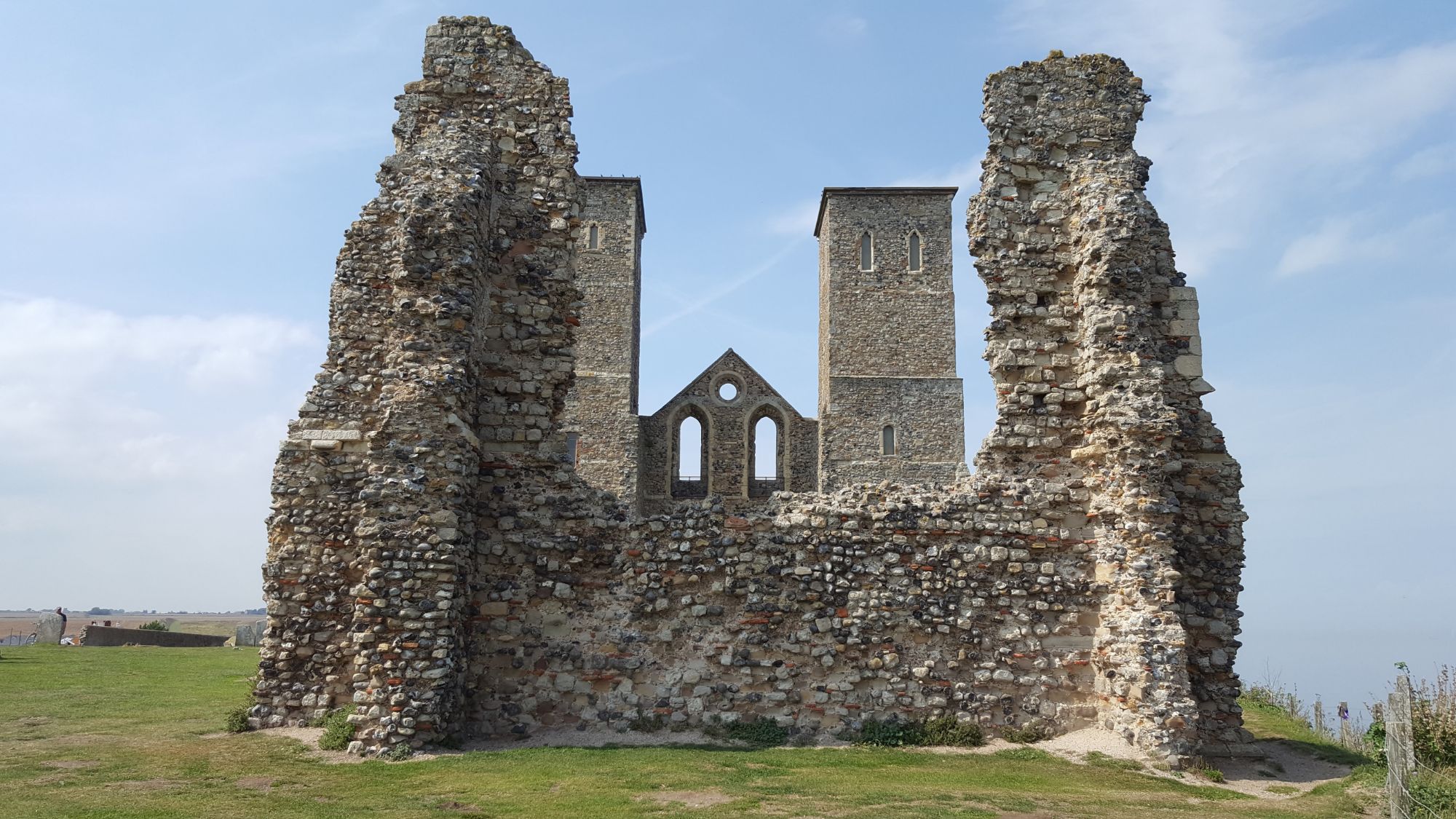
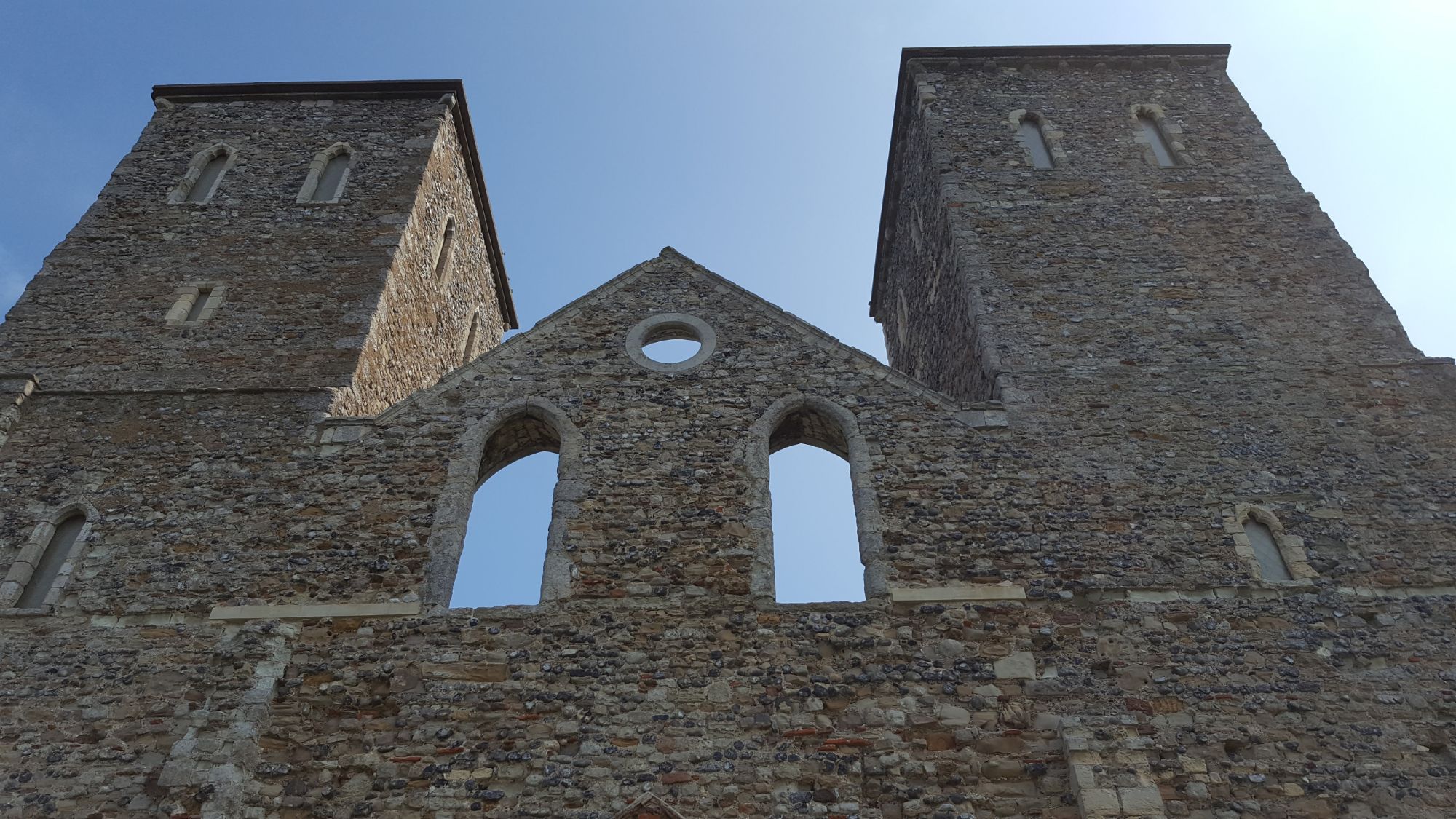
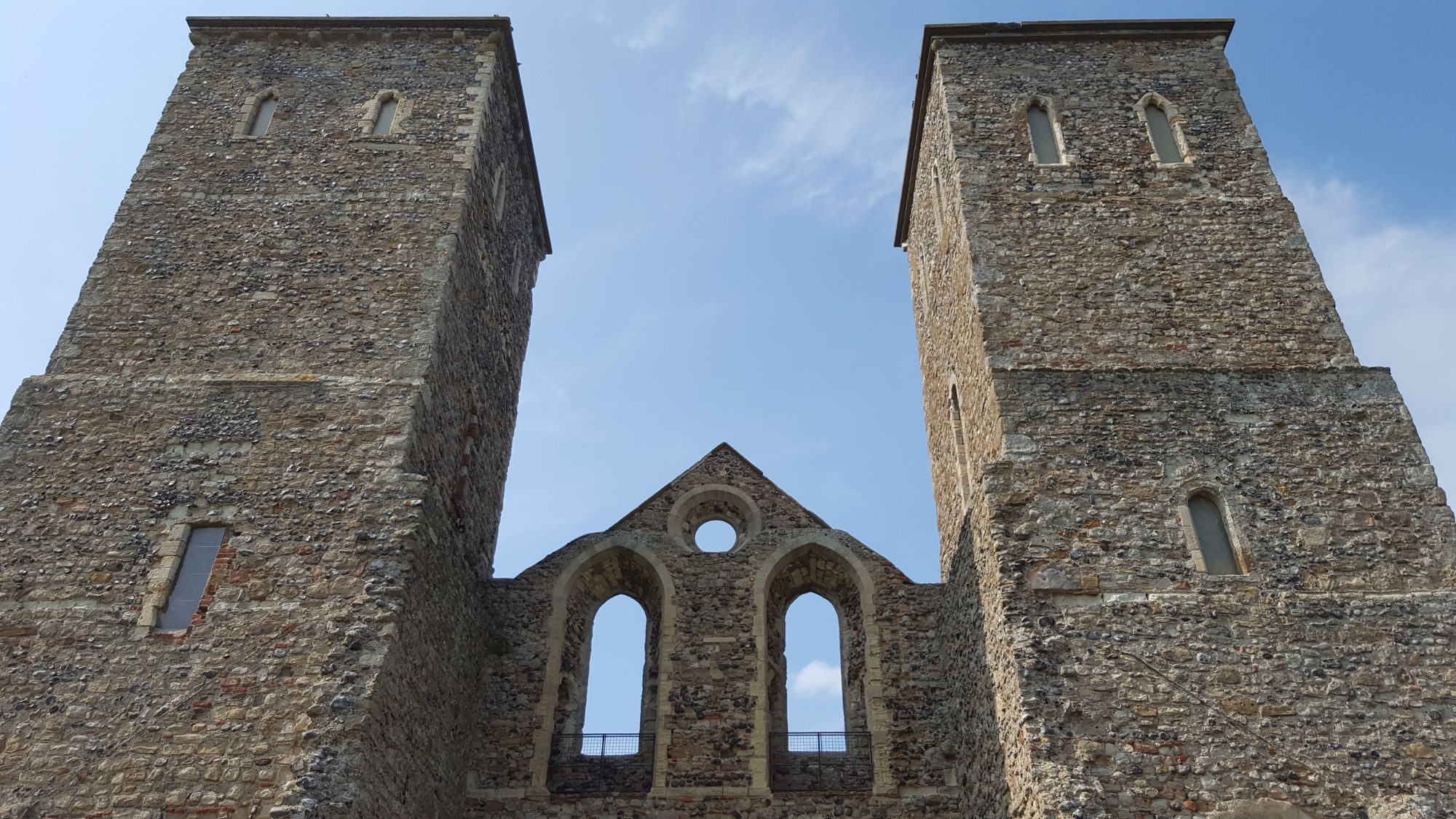
Address: Reculver Lane, Reculver, Kent, CT6 6SS – English Heritage website
See my guide for more fun things to do in Kent
Guides on towns in Kent





